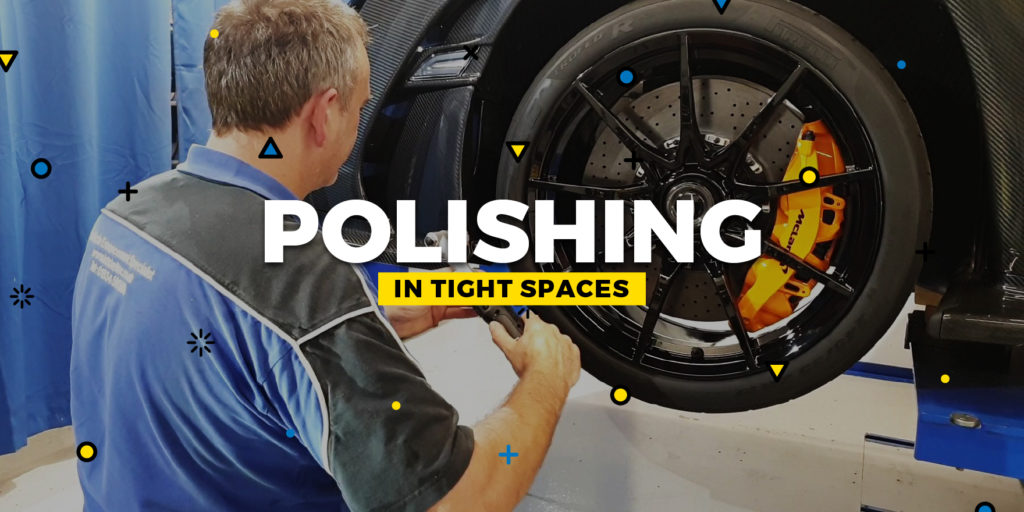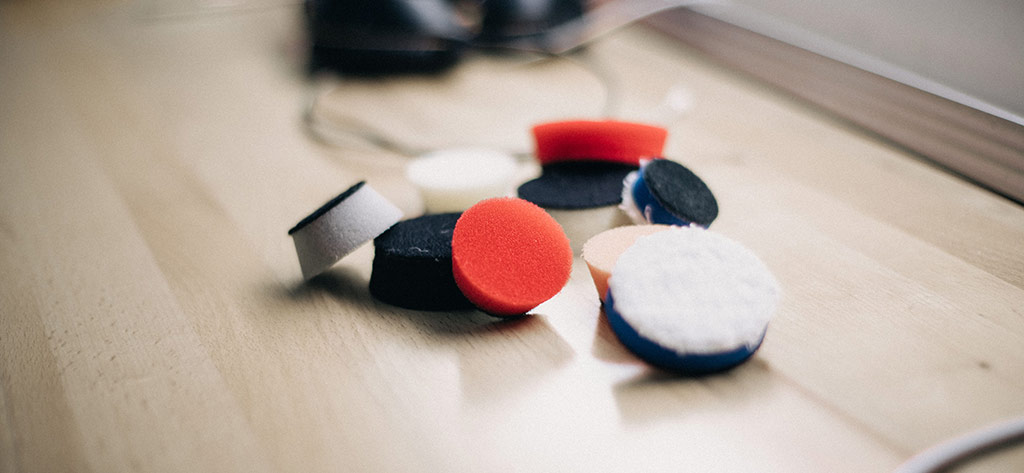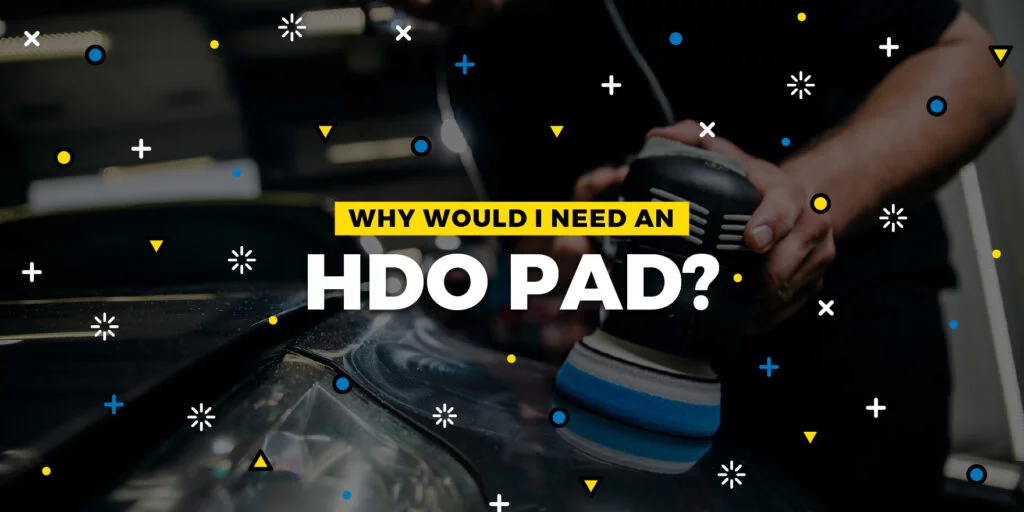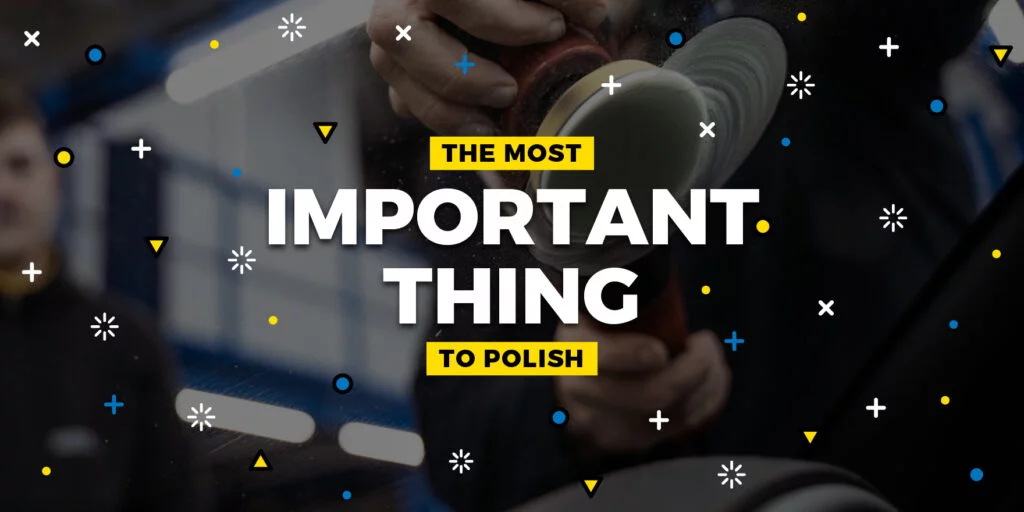
Introducing Lake Country’s New MarineLine Buffing Pads
Experience Superior Marine Detailing with Our Specialized Range At Lake Country, we’re excited to unveil our all-new MarineLine—a comprehensive collection of buffing pads specifically engineered

If you’re looking to achieve professional quality results, car polishing demands patience and commitment. Polishing to improve an automobile’s appearance is relatively easy – but polishing to perfection is an entirely different situation, one which requires considerable effort, time, and specialty equipment.
When faced with the decision on where to allocate those valuable resources, tight scoops, louvres, vents, and channels tend to be overlooked by detailers since they are usually the least visible parts on a car under normal, day-to-day conditions. However, if you’re aiming for a truly high-end correction detail, you’ve got to get in there and make it count!
With that being said, there are still many questions even the most expert detailers ask themselves when polishing these tight spaces. Here are the top five most common questions that pertain to this meticulous situation:
If it’s important to you or a customer to polish in those aforementioned tight spots, then it’s important to polish them correctly. In many cases, the physical shapes of the pads involved will determine how well this is accomplished.
At 3” in size, our popular SDO and HDO pads give you familiar options to suit mini-orbital polishers with larger and smaller orbital actions. In our Force range (designed to fit 1”, 2” and 3” backing plates), you have a huge variety of cut options, allowing you to tackle heavy defect removal tasks, such as heavy sanding marks that require a rotary action, in awkward spots, and then refine the area all the way back to a jewelled finish.
Taking a 5” or 6” pad to a large flat panel means you can cover ground quickly, wipe off your compound residue comfortably, and inspect your work easily. On many cars, this describes 90% or more of the painted bodywork surface.
Taking a 1” or 2” pad to a contoured scoop can be the exact opposite. The reduced access requires you to constantly adjust your body, arms, and wrists to follow the shapes you’re working on. Additionally, you must twist your fingers around small gaps, or think of clever ways to buff away polish residue safely while continuously checking your work with a portable light from multiple angles. Polishing tight spaces is a more taxing procedure and for these reasons, it takes a considerable amount of time and effort.
An additional question to consider is: have you allocated enough time to do so?
Tight spots can be hard to fit your pad into, but also just as hard to get your actual machine into without rubbing and scuffing an opposing surface. There is no point removing swirls and creating a fantastic gloss if you’re simultaneously damaging another area.
Before turning on the polisher and attempting any polishing in tight gaps, you should carefully rehearse your actions and check for adequate clearance of the head and motor body.

Mini-rotary polishers are a precise and effective tool, especially when matched with a beautifully tapered pad edge design, such as on our Force 1” and 2” micro pads. In doing so, mini-rotary polishers can be used like a scalpel along panel edges or up against jutting surfaces.
But they do suffer the same potential drawbacks as their big brothers – namely, the potential for leaving holograms behind, the extra need to mask up trims and rubbers, and the ability to cut ‘too quickly’ and break through the clear coat. Most would agree that the last error is worse than leaving the scratch just slightly rounded off.
Mini-orbital polishers cut more consistently across the pad face and offer a generally safer polishing option. However, the oscillation of the backing plate creates a boundary where the pad will be less effective and runs the risk of knocking nearby surfaces – a factor exacerbated by the relative size of the orbit as a proportion of the diameter of the pad. This can render mini-orbital polishers less effective in certain tricky spots, where accuracy matters above all else.
This author prefers to use a mini-orbital polisher by default and always for refining, but a mini-rotary for edge work and when deeper defects need extra attention.
This is the ultimate question. Considering the last four questions, it is clear that you need to factor in all of these elements before making a judgment call or promises that you cannot deliver on.
If you’re practicing or perhaps working on your own vehicle, then you may find tackling tricky spots an enjoyable challenge which you can devote unlimited resources to. However, when you’re working for a paying client, be sure to understand his or her expectations that include quality of outcome, timescale, and budget. Lastly, be equally as certain that you’ve considered the difficult spots to polish before chasing that last few percent of perfection.

Experience Superior Marine Detailing with Our Specialized Range At Lake Country, we’re excited to unveil our all-new MarineLine—a comprehensive collection of buffing pads specifically engineered

Written for the IDA Detail Dialogue, Published December 2022 In detailing, we naturally obsess over tiny details – hence the name, I suppose. A smudge,

Polishing glass ranks as one of the most overlooked detailing skills and services. Aside from being aesthetically pleasing to have pure transparent glass, it’s incredibly

Experience Superior Marine Detailing with Our Specialized Range At Lake Country, we’re excited to unveil our all-new MarineLine—a comprehensive collection of buffing pads specifically engineered

Written for the IDA Detail Dialogue, Published December 2022 In detailing, we naturally obsess over tiny details – hence the name, I suppose. A smudge,
950 Blue Ribbon Cir N
Oconomowoc, WI 53066
#lakecountrymfg
Select Your Language